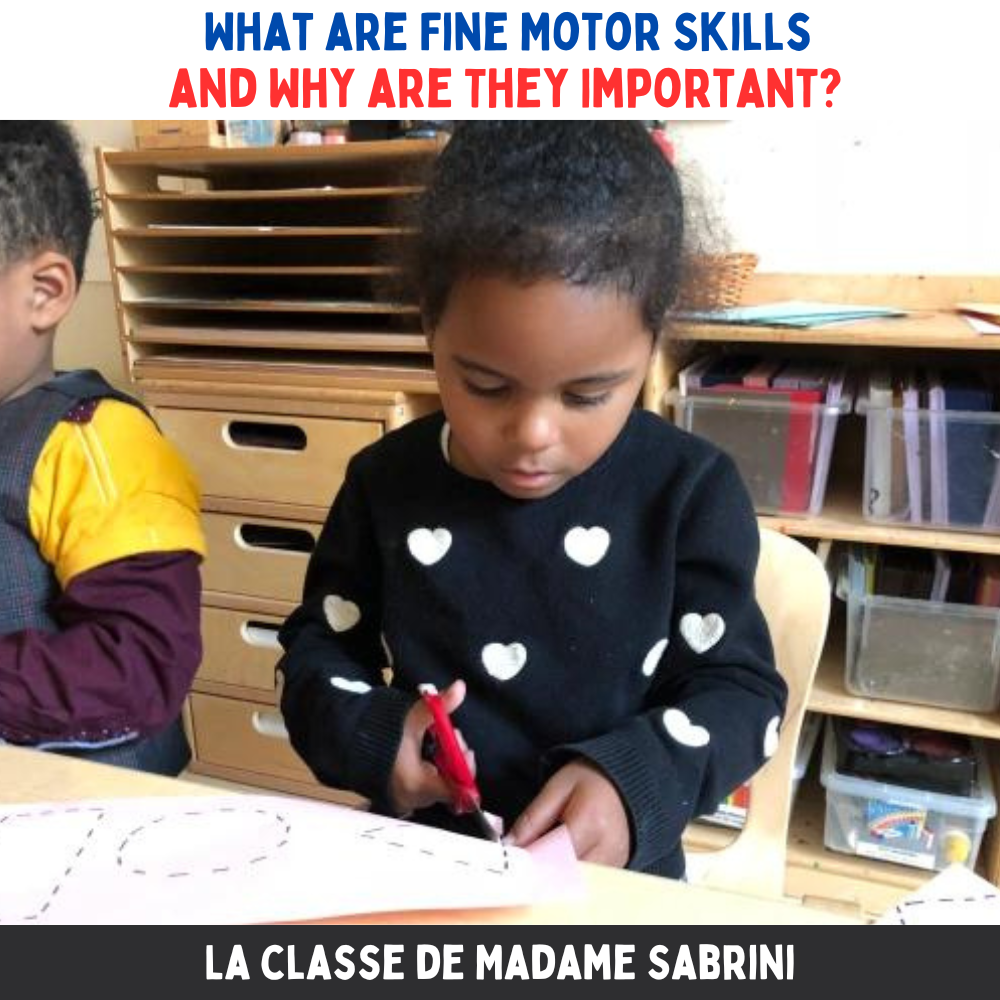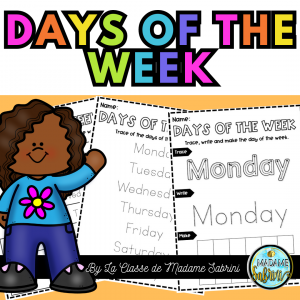This post may contain affiliate links which means I may receive a commission for purchases made through links. I will only recommend products that I have personally used! Learn more on my Private Policy page.
As parents and teachers get ready to welcome children back to school this year, one of the best things you can do to help them develop fine motor skills is to incorporate scissor cutting activities into their everyday routines. Scissor cutting helps children with their hand-eye coordination, finger strength, and other motor skills. Here are some expert tips on how to make the most of scissor cutting to build fine motor skills this back to school season.
What are Fine Motor Skills and Why are They Important?
Fine motor skills refer to the small movements of the hands and fingers that are essential for tasks like writing, cutting, and buttoning. These skills are crucial for a child’s overall development and academic success. As children head back to school, it’s important to understand the importance of fine motor skills and how they can be developed through activities like scissor cutting.
Fine motor skills play a vital role in a child’s ability to perform everyday tasks. From holding a pencil to tying shoelaces, these skills are necessary for academic success and independence. They also contribute to hand-eye coordination, which is crucial for tasks such as handwriting and drawing.
By incorporating scissor cutting activities into their daily routines, parents and teachers can help children strengthen their fine motor skills. Scissor cutting not only improves hand-eye coordination but also develops finger strength and dexterity. This is especially important for kindergarten children who are just beginning to learn how to use scissors.
In addition to these practical benefits, scissor cutting can also enhance a child’s cognitive and creative abilities. As they manipulate scissors to cut different shapes and patterns, children engage in problem-solving and explore their artistic side.
The Benefits of Using Scissors for Fine Motor Development
When it comes to developing fine motor skills in children, scissors are an incredibly valuable tool. Using scissors not only helps children improve their hand-eye coordination, but it also strengthens their finger muscles and enhances their dexterity. This is especially crucial for kindergarten children who are just starting to learn how to use scissors.
By incorporating scissor cutting activities into the classroom or at home, teachers and parents can provide children with numerous benefits. Firstly, cutting with scissors helps children refine their hand-eye coordination as they learn to follow lines and shapes. This skill is essential for tasks such as handwriting and drawing.
In addition, scissor cutting allows children to exercise their creativity and problem-solving skills. They can experiment with different shapes and patterns, giving them the opportunity to think outside the box and explore their artistic side.
Furthermore, using scissors helps strengthen the finger muscles, improving grip and control. This will have a positive impact on their ability to hold and maneuver writing utensils, ultimately supporting their overall handwriting development.
By understanding the benefits of using scissors for fine motor development, teachers and parents can make a conscious effort to incorporate scissor cutting activities into daily routines. This simple yet effective practice can lay the foundation for lifelong fine motor skills and academic success.
Choosing the Right Scissors for Your Child’s Age and Skill Level
Choosing the right scissors for your child’s age and skill level is essential in helping them develop their fine motor skills. As a teacher or parent, it’s important to provide children with scissors that are safe and appropriate for their developmental stage.
For kindergarten children who are just starting to learn how to use scissors, safety should be the top priority. Look for scissors with blunt tips and rounded edges to prevent any accidental injuries. Additionally, consider scissors that have a larger handle and a more ergonomic design, as this will make it easier for their little hands to grip and control the scissors.
As children progress in their scissor skills, you can introduce scissors with sharper blades, but always supervise them closely. This will help them develop better control and precision while cutting.
It’s also important to consider the size of the scissors. Scissors that are too large or too small for a child’s hands can hinder their progress and may even lead to frustration. Ensure that the scissors are the right size and fit comfortably in their hands.
How to Teach Your Child Safe Scissor Handling Techniques
Teaching your child safe scissor handling techniques is crucial to ensure their safety while they develop their fine motor skills. As a teacher, parent, or caregiver, it’s important to guide them through the process and instill safe habits from the beginning. Here are some tips on how to teach your child safe scissor handling techniques.
1. Start with proper scissor grip: Show your child how to hold the scissors correctly, with their thumb in the small loop and their fingers in the larger loop. Encourage them to practice this grip before they start cutting.
2. Emphasize hand positioning: Teach your child to keep their non-dominant hand on top of the paper while cutting. This will help them maintain control and stability.
3. Demonstrate safe cutting motions: Show your child how to open and close the scissors with a smooth cutting motion. Remind them to always cut away from their body and keep their fingers clear of the blades.
4. Encourage focused cutting: Teach your child to pay attention to the line or shape they are cutting along. This will help them develop their hand-eye coordination and stay on track while cutting.
5. Supervise and provide guidance: When your child is cutting, be present to supervise and offer guidance as needed. Correct any unsafe habits or movements, and praise them for following safe practices.
By teaching your child safe scissor handling techniques, you are equipping them with the skills they need to develop their fine motor skills effectively and safely. Remember to be patient and encouraging as they learn, and always prioritize their safety throughout the process.
Fun and Easy Scissor Cutting Activities to Try at Home or in the Classroom
Looking for fun and easy ways to incorporate scissor cutting activities into your child’s daily routine? Look no further! We have compiled a list of engaging activities that you can try at home or in the classroom to help develop fine motor skills through scissor cutting.
1. Shape Collage: Provide your child with a variety of colorful construction paper and ask them to cut out different shapes. Then, have them glue the shapes onto a blank piece of paper to create a beautiful shape collage. This activity not only allows children to practice their scissor cutting skills but also enhances their creativity.
2. Paper Chains: Help your child create paper chains by cutting long strips of colored paper and joining them together using tape or glue. This activity promotes scissor control and coordination as they need to cut straight lines and accurately measure the length of the strips.
3. Cutting Playdough: Roll out playdough into a flat sheet and encourage your child to use scissors to cut it into different shapes. This activity helps develop hand strength and dexterity while also providing a sensory experience.
4. Picture Puzzles: Print out simple pictures or drawings and ask your child to cut them into smaller pieces. Then, challenge them to put the pieces back together like a puzzle. This activity improves scissor control and problem-solving skills.
5. Magazine Collage: Give your child old magazines and ask them to cut out pictures or words that interest them. Then, have them glue the cutouts onto a piece of poster board to create their own magazine collage. This activity enhances scissor cutting skills while also promoting literacy and creativity.
Troubleshooting Common Scissor Cutting Challenges
Scissor cutting is an important skill for children to develop, but it can come with its fair share of challenges. As a teacher or parent, it’s important to be prepared for these challenges and have strategies in place to overcome them. Here are some common scissor cutting challenges and how to troubleshoot them:
1. Lack of hand strength: Some children may struggle with holding the scissors and cutting due to weak hand muscles. Encourage activities that help build hand strength, such as squeezing stress balls or playing with playdough.
2. Difficulty following lines: Cutting along a straight line or shape can be challenging for young children. Provide practice worksheets with dotted lines or use colored tape to create cutting lines on paper. This will provide visual cues for children to follow while cutting.
3. Uneven cutting: Some children may have difficulty cutting in a straight line, resulting in uneven or jagged edges. Practice using ruler or straight edge guides to help children cut more accurately. Alternatively, you can draw a straight line for them to follow.
4. Safety concerns: Scissor cutting can be intimidating for some children, leading to safety concerns. Remind children to always hold the scissors with the blades facing down and to keep their fingers clear of the blades. Supervise closely during cutting activities to ensure safety.
5. Lack of focus: Children may become easily distracted while cutting, leading to uneven or careless cutting. Provide a quiet and focused environment for cutting activities. Use timers or visual cues to help children stay on task.
Building on Scissor Skills for Overall Handwriting Development
Once children have developed their scissor cutting skills, it’s important to recognize that these skills can be built upon to support overall handwriting development. As a teacher, you can play a crucial role in guiding your students towards improved handwriting through scissor cutting activities.
One way to build on scissor skills for handwriting development is to introduce activities that involve cutting along lines or shapes that resemble letters. For example, you can create worksheets with dotted lines that mimic the shapes of letters or provide templates for children to cut out letters themselves. By engaging in these activities, children will not only further refine their scissor cutting skills but also begin to associate the movements and shapes involved in cutting with those required for writing.
Additionally, encourage children to use scissors for other tasks that promote fine motor skills, such as cutting out pictures from magazines or creating their own mini books by cutting and stapling pages together. These activities will strengthen hand muscles and promote dexterity, both of which are important for developing strong handwriting skills.
Encouraging Practice and Progress with Positive Reinforcement
Encouraging children to practice their scissor cutting skills is crucial for their progress and overall fine motor development. As a teacher, you play a vital role in motivating and supporting your students on their scissor cutting journey. Positive reinforcement is a powerful tool that can inspire children to continue practicing and make progress in their skills.
One way to encourage practice is by acknowledging and celebrating even the smallest achievements. Praise your students when they successfully cut along a line or create a recognizable shape. Let them know that their efforts are noticed and appreciated. Positive feedback can boost their confidence and motivate them to continue working on their scissor cutting skills.
You can also incorporate goal-setting into your scissor cutting activities. Encourage your students to set personal goals, such as cutting out a specific shape or improving their accuracy. Help them break down these goals into smaller, achievable steps. By tracking their progress and celebrating each milestone, you can create a sense of accomplishment and drive them to keep practicing.
Incorporating fun and engaging activities can make scissor cutting practice more enjoyable for your students. Create themed cutting projects, such as cutting out shapes to create a collage of animals or cutting out letters to spell their names. This not only makes the practice session more exciting but also allows them to see the practical application of their scissor cutting skills.
Remember to provide constructive feedback and guidance when needed. Encourage your students to reflect on their cutting techniques and suggest improvements. This helps them develop a growth mindset and shows them that practice and effort can lead to improvement.


















